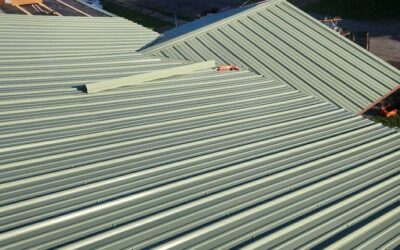How to Prepare for a New Roof Installation: A Comprehensive Guide
Roof installation is a significant event for any homeowner. Whether you’re replacing an old, worn-out roof or installing a new one, preparation is key to making sure everything goes smoothly. A well-prepared home and property ensure the safety of both your belongings and the roofing crew.
In this comprehensive guide, we will walk you through the essential steps you need to take to prepare for a new roof installation. From deciding whether to stay home to ensuring your property is clear of any obstacles, each of these tips will help the process run seamlessly. Read on for expert advice and ensure that your new roof installation is as smooth and stress-free as possible.
1. Decide If You and Your Pets Are Staying Home During the Roof Installation
One of the first things you need to consider when preparing for a new roof installation is whether you and your family will remain in the home during the process. Roof installations can be noisy, disruptive, and sometimes even a bit chaotic, so it’s important to decide if staying at home is a feasible option.
Staying Home
If you decide to stay home, there are a few things to consider:
- Noise Levels: Roof installations can generate a significant amount of noise, especially with the use of hammers, nail guns, and the removal of old roofing materials. If you or your family members are sensitive to loud sounds, it may be a good idea to plan for some noise-canceling headphones or ear protection.
- Disruption: The roofing crew will need to move around the house, sometimes using ladders or equipment that could block entrances. Ensure that you are prepared for limited access to certain areas of your home.
- Safety: While the roofing crew will take precautions to avoid accidents, it’s important to make sure you and your pets stay out of the way. Roofing materials and debris may fall from the roof, so it’s safest to keep a safe distance.
Leaving the House
If you prefer to avoid the noise and disruption, it may be a good idea to temporarily leave your home. You could visit a family member, go to work, or spend the day out for errands. Just make sure you arrange for access if needed. If you’re planning to leave for an extended period, also make sure your pets are in a safe place. Pets are often sensitive to loud noises, and a roofing project could be overwhelming for them.
2. Take Anything Valuable Off Your Walls
Before the roofing crew begins their work, it’s essential to take precautions with items that may be on your walls. The vibrations from the roofing work can cause pictures, artwork, mirrors, and other wall-mounted items to loosen or fall. This could lead to damage to your possessions or your home.
Items to Remove from the Walls
- Pictures and Artwork: Take down any framed pictures, artwork, and mirrors that are hanging on your walls.
- Wall Clocks: These are particularly vulnerable to vibrations, so it’s best to remove them from their hooks.
- Decorative Items: Any small decorative items, such as hanging shelves or trinkets, should be secured or removed.
It’s better to be proactive in removing these items to avoid accidents. If you have large or heavy pieces of artwork, consider placing them in a safe, secure area of your home until the roofing project is complete.
3. Turn Off Your Irrigation System or Any Other Automatic Lawn Watering System
If you have an automatic irrigation system or any lawn watering systems installed, it’s essential to turn them off before the roof installation begins.
Why Turn Off Irrigation?
- Protection of Equipment: The roofing crew may need to walk on your lawn or garden as part of the installation process. If your sprinklers are running, they could get damaged.
- Avoiding Wet Conditions: If your irrigation system is on, the crew will have to navigate through wet conditions, which can make their job harder and could potentially cause delays.
- Safety Concerns: Watering systems, especially ones with sprinkler heads, could be damaged during the roof installation process. If the workers aren’t aware of your irrigation system, they may accidentally step on a sprinkler head or damage an irrigation line.
Turning off your watering systems for the duration of the project is a small but important step in ensuring the safety of your equipment and the workers.
4. Move Your Vehicles to Avoid Being Blocked In
Roof installations can sometimes take up a significant amount of space around your home, especially if the crew needs to place roofing materials or equipment near your driveway. To avoid being blocked in or having trouble accessing your vehicle, it’s a good idea to move your cars before the installation begins.
Why Move Your Vehicles?
- Access: The roofing crew will need access to various areas around your home, including the driveway, yard, and sometimes the street in front of your house. Keeping your vehicles away from these areas will make it easier for the crew to move around.
- Protecting Your Car: With large roofing materials and debris being moved around, it’s crucial to protect your vehicles from potential damage.
- Traffic Flow: During the roofing process, materials may need to be delivered or disposed of, and the crew will need space to unload and load materials. Having your vehicles moved out of the way will help the process move efficiently.
It’s a good idea to park your cars in a nearby garage or street parking, as long as the space is clear and accessible.
5. Walk Around and Inspect Your Property
Before the roofing crew arrives, it’s wise to take a walk around your property to inspect the areas surrounding your home. This will help you identify any potential hazards or obstacles that could interfere with the roofing project.
Key Things to Look For:
- Obstructions: Ensure there are no obstacles, like outdoor furniture, bicycles, or gardening equipment, that could be in the way of the workers. These items should be moved to a safe area.
- Overhanging Branches: If you have trees near your home, inspect the branches to ensure they are not hanging directly above the roof. Overhanging branches could pose a safety hazard to both the workers and your property.
- Debris: Clear any debris from your yard, such as leaves, twigs, or trash, to provide a clear and safe working space for the roofing crew.
- Roof Access: Ensure that the crew will be able to safely access the roof. Check that ladders or scaffolding can be placed without obstruction.
Performing a thorough inspection of your property will give you peace of mind that the crew will have everything they need to complete the job safely and efficiently.
6. Don’t Set Your Alarm on the Day of Your New Roof Installation
It’s easy to forget, but one crucial step is making sure you don’t accidentally set your alarm system for the day of the roof installation. If your alarm system is triggered by movement or vibrations, it’s likely to go off during the roofing work.
Why Disable the Alarm System?
- Prevent False Alarms: Roofing work often involves a lot of movement, noise, and vibrations. These could easily trigger an alarm and cause unnecessary panic or stress.
- Safety Concerns: False alarms can cause confusion for both you and the roofing crew. In some cases, security companies may send law enforcement to your property, adding complications to the project.
- Peace of Mind: Disabling your alarm system ensures that you won’t be disturbed by constant notifications, and the roofing crew can work without interference.
Before the roofing crew arrives, take the time to check that your alarm system is disabled for the day. This will allow the work to go on without interruption.
Conclusion
Preparing for a new roof installation is essential to ensure the process goes smoothly. By following these simple steps, you can minimize disruptions, protect your property, and ensure the safety of your family and the roofing crew.
Remember to decide if you and your pets are staying home, take valuable items off your walls, turn off your irrigation system, move your vehicles, inspect your property for potential obstacles, and disable your alarm system. With these preparations in place, you can sit back and relax while the professionals handle your new roof installation.
By taking the time to properly prepare, you’re not only ensuring a smooth installation but also giving your new roof the best chance to last for many years to come.
 (440) 307-2060
(440) 307-2060


